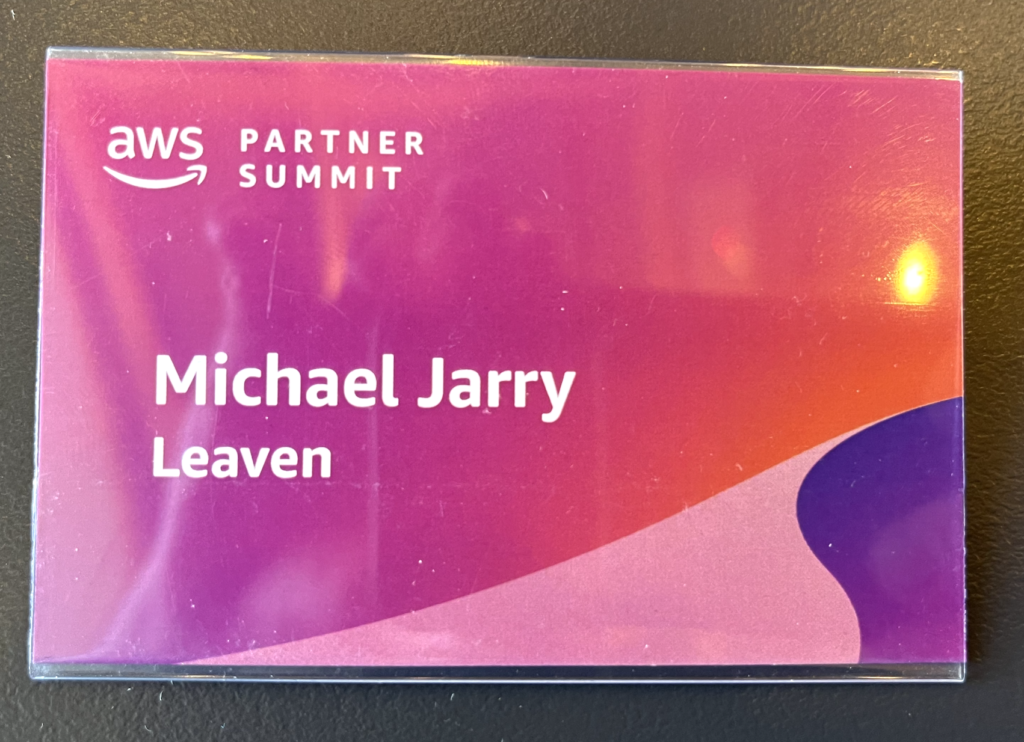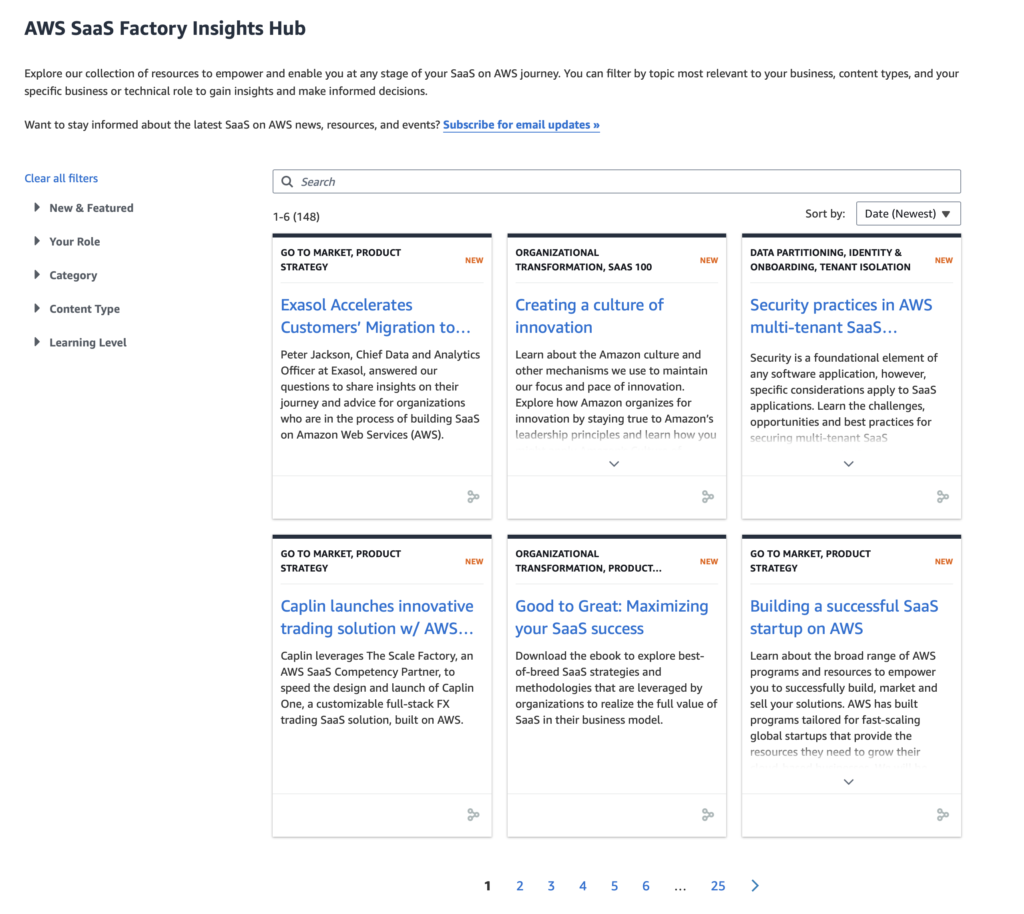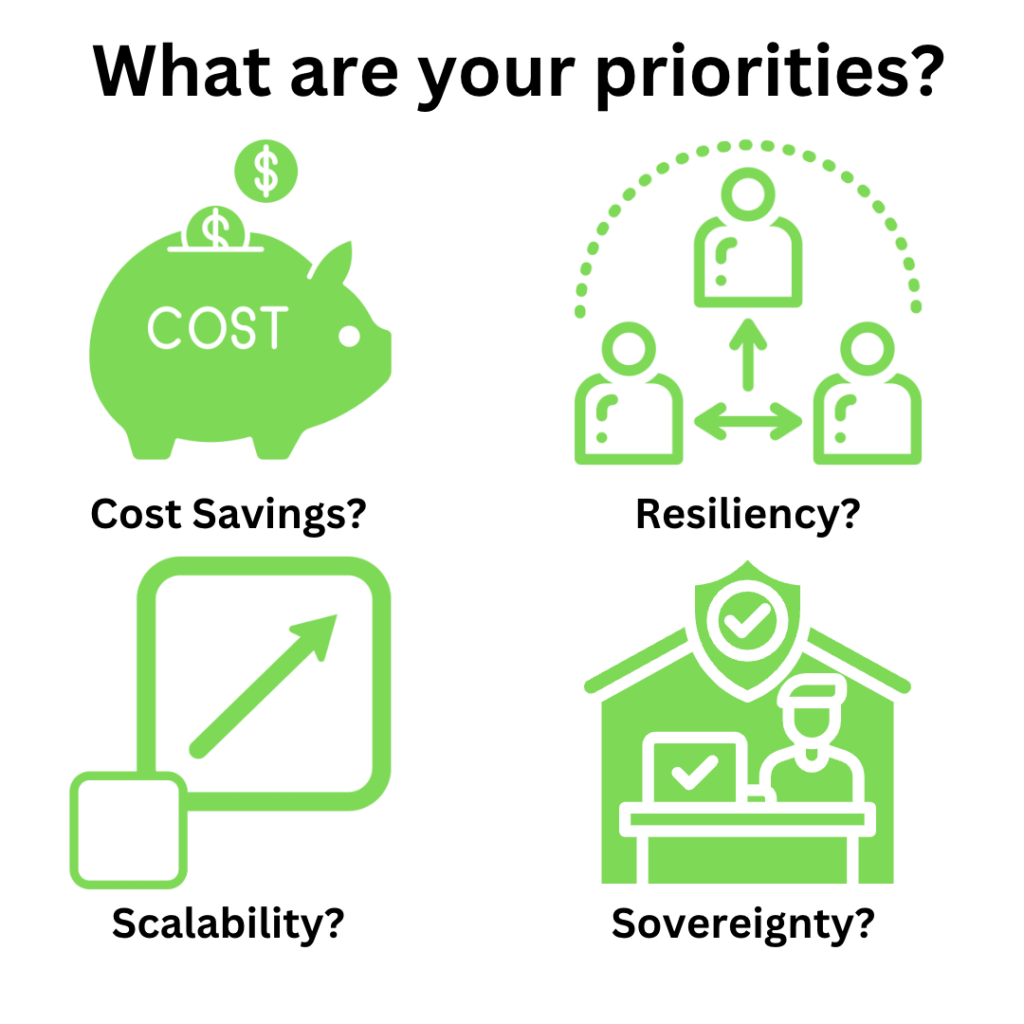I got the opportunity to attend the AWS Sydney Summit 2023 courtesy of my work, so I want to share a few of my learnings. I’ve been migrating my blog, and as such, I wanted to add some more to this article. So, I’ll be comparing the topics discussed at the Sydney Summits in 2023 and compare them to now. Let’s if the information is still relevant.
The Partner Summit
AWS hosts a summit the day before the public summit for AWS Partners to network at the Amazon Office. It’s a good opportunity to get some additional learnings and find out what’s going on in the partner space.

So, let’s dive into some of the key themes of the partner summit and see if it’s still relevant.
Sustainability
Sustainability is the 6th pillar of the Well Architected Framework now, which was a big focus in this summit. We heard about how another AWS Partner, KnowIT, developed a sustainability tool to help customers align themselves with United Nations goals using AWS. There was a discussion about how the Auckland Region will be powered entirely by renewable energy when it launches, making it a good region for those who put sustainability at the forefront.
According to a Deloitte study, 66% of companies are working to increase their energy efficiency, and 46% of those companies need their business partner’s assistance to get them there. This still holds true, sustainability is still a big concern in the industry.
Perhaps, now, even more than ever, we need to prioritise sustainability. The AI boom has led to increased datacentre consumption and as a result, increased power usage, hastening climate change. According to Microsoft, between 2020 and 2023, their power consumption increased by over 40%. So, let’s not let this AI boom distract us from our goal of saving our planet.
Sustainability doesn’t have to be a trade-off
According to AWS, the sustainability pillar can be achieved by achieving all of the other AWS Well Architected pillars, and it makes sense. By maximising automation, you’ll optimise your spend, you’ll lower environment usage, and thus, you’ll lower your carbon footprint.

While this is certainly somewhat true, I see the biggest impacts to sustainability coming from:
- Choosing sustainability-focused cloud providers, and choosing sustainability-focused regions, e.g. the Auckland region, powered entirely by renewable energy.
- Vendors and cloud providers developing new technology to reduce carbon footprint.
Meaningful data is needed
AWS provides us with a tool we can use to visualise our carbon footprint. The AWS carbon footprint tool let’s us visualise our Carbon Footprint, but it’s also lacking. So far, I haven’t seen a way to call these APIs directly to retrieve the carbon footprint data, and it doesn’t give you as granular results as I’d like.
SaaS
Software as a Service is a growing industry, even in our economically challenging environment. SaaS reduces your need on specialised technologists and decreases liability, but is it still viable? SaaS, while it’s a delivery model and not a product in itself, is quite over saturated, this pushes SaaS costs down, which is great for businesses, but means it’s harder to grow your business unless you already have scale.
AWS tooling to assist with SaaS
AWS provides us with some tooling we can use to assist us in building SaaS applications. AWS SaaS Factory, provides us with a place to educate ourselves on how others have built SaaS applications on with AWS services.

We are also provided with access to the AWS Marketplace, which offers us a place to list our applications and services. The good news is marketplace makes it very easy to advertise your services on AWS, whether it be professional services, or a SaaS application.

By using the AWS Marketplace, AWS customers get increased simplicity, just adding another line item to their bill and accessing everything via AWS. This has a positive impact on your own business because AWS customers get increased simplify purchasing and using your applications from the Marketplace too.
AWS has published a study on the financial implications on using the AWS Marketplace.
Is it still wise to go SaaS?
I think so, going SaaS increases your scalability and these days there are so many frameworks and tools out there that allow you to go SaaS quickly. The key will be understanding how difficult it will be for you to go SaaS, building a new SaaS product is easy, but brownfields is difficult, re-architecting may be required.
One thing is for certain, SaaS is certainly not going away any time soon.
The Public Summit
After going to the partner summit, it was time for us to attend the biggun.

Let’s cover some of the themes I discovered during the conference.
The importance of New Zealand
The opening keynote emphasised the importance of the Auckland AWS Region, and we learned some facts about the region.
- AWS will invest 7.5 billion dollars in the New Zealand region, approximately the same amount as was invested in Australia previously for their Sydney Region.
- The investment will created around 1,000 external jobs and have an estimated economic impact of 10.8 billion New Zealand dollars.
- Mercury Energy will power the datacentre with 100% renewable energy.

Most companies in New Zealand who use AWS use the Sydney Region. It’s a shame the region has taken so long to launch, but as it launches and matures, I’m sure New Zealand businesses will find it a breath of fresh air to get better latency with their workloads.
Cloud versatility
A big topic during the summit was multi-cloud and one of the biggest vendors talking about this, was, of course, Red Hat. Red Hat OpenShift, a Kubernetes-based container platform, allows you to run your workloads across multiple clouds, and has a feature set that allows you to get some elastic-beanstalk like functionality out of it. Making it an easy-to-use platform for developers.
According to a report by Flexera, 49% of respondents, back in 2021, were using multi-cloud architectures, with the top-3 types being:
- Apps siloed on different clouds (49%)
- Data integration between clouds (45%)
- Workload mobility between clouds (42%)
On a personal level, I’ve only seen multi-cloud usage grow. Businesses are using whatever cloud makes sense to them, the biggest hindrance to multi-cloud is egress and data transfer costs between clouds, but there are companies, like Red Hat for example, that are making it easier to go multi-cloud.
The multi-cloud dream
Many vendors like HPE, RedHat and VMWare (well, now Broadcom!) provide their own solutions that sell the multi-cloud dream. Like the American Dream, the multi-cloud dream is something that is more complicated to achieve than it seems. A vendor will never solve your multi-cloud problems. It requires thought, investment and a good architecture.
I have some friends in the industry who work for vendors, and have told me horror stories of customers that run giant multi-cloud Kubernetes clusters, where even the smallest change can prove difficult.
Multi-cloud requires a valid use-case and specific implementation
Adopting a one-size-fits-all solution from a vendor to enable multi-cloud workloads might just increase complexity. The most successful multi-cloud implementations I’ve seen have a valid use-case on why multiple clouds should be used, and what clouds should be used (if you want availability, just use multiple regions). They also have been architected specifically to fit the needs of their use-case.

Consider what you and your business priorities are to achieve your desired results. For example, a cloud-native serverless solution like AWS Lambda could be advantageous if your business aims to minimise operating costs. However, deploying a sizeable multi-cloud container platform and converting all essential services to containers may enhance resiliency and scalability. Still, it may not necessarily lead to cost reduction if that’s your ultimate goal.
Look out for innovative solutions in the future
One of the long-term benefits of AI could be enabling vendors to build more automated and proper multi-cloud solutions that can actually achieve the multi-cloud dream. Definitely keep an eye on developments of these products.
My advice would be to keep an eye on the highly-technical companies with strong cloud capabilities like Red Hat. Many companies offer multi-cloud solutions that are really just rebranded services by professional services businesses. So, it’s important to look out for yourself and choose a solution that is robust and thoroughly test it.
Final Notes
After reviewing the Sydney Summits of 2023, I can say most of this stuff is still on-topic today. It’s been slightly obscured by the AI boom, but I think if anything, AI is really just an enabler for the stuff we’ve discussed in this article like sustainability, workload flexibility and business scalability.
It will be interesting to see how the industry develops in 2025.

Leave a Reply